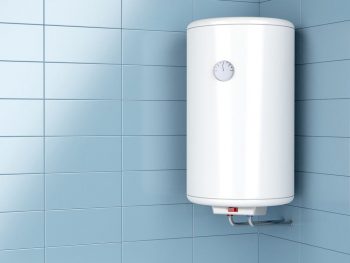
Venting a microwave through a wall is an effective way to improve air quality and reduce humidity in your kitchen. It might seem like a complex task, but with the right tools and a bit of guidance, you can accomplish it yourself. In this comprehensive guide, we’ll walk you through the step-by-step process, provide examples, and share tips to avoid common mistakes.
Venting a microwave through a wall involves choosing the right location, preparing the microwave, marking and cutting the vent hole, installing the ductwork and a wall cap, sealing the duct joints, attaching the microwave, and connecting the ductwork to the microwave. Once installed, test the vent to ensure it’s working properly. Be sure to avoid common mistakes such as misaligned ducts, incorrect duct size, insufficient space around the microwave, and incorrect installation. Always consult your local building department or a professional installer to ensure compliance with local codes.
Why Vent a Microwave Through a Wall?
Venting a microwave through a wall has several benefits:
- Improved air quality: It removes smoke, odors, and moisture from the kitchen, preventing them from recirculating in the house, maintaining a cleaner and fresher indoor environment.
- Better ventilation performance: Externally vented microwaves are generally more effective at removing smoke and odors compared to recirculating models.
- Reduced humidity: It can help reduce humidity levels in the kitchen, preventing mold and mildew growth.
- Enhanced cooking experience: By removing smoke, odors, and moisture from the cooking area, an externally vented microwave can provide a more pleasant and comfortable cooking experience.
Tools and Materials Needed
Before you start, gather all the necessary tools and materials. You’ll need:
- Measuring tape
- Pencil
- Keyhole or hole saw
- Screwdriver
- Ductwork (rigid duct made of galvanized steel, stainless steel, or copper)
- Wall cap
- Duct tape or mastic
- Mounting hardware
Step-by-Step Guide
Step 1: Choose the Right Location
Find a suitable place for your microwave vent, preferably on an exterior wall. Ensure there is enough space for the ductwork and that it won’t interfere with any electrical wiring or plumbing.
Step 2: Prepare the Microwave
Most over-the-range microwaves come with a built-in exhaust fan that can be vented externally. You may need to adjust the fan’s orientation to vent through the wall instead of recirculating the air.
Step 3: Mark and Cut the Vent Hole
Use the microwave’s template or measure the vent dimensions to mark the location of the vent hole on the wall. Cut the hole using a keyhole saw or a hole saw.
Step 4: Install the Ductwork
Attach the ductwork to the microwave’s exhaust port. Use a rigid duct, preferably made of galvanized steel, stainless steel, or copper, as required by the International Residential Code. The duct should lead directly to the outdoors and not terminate in an attic or crawl space.
Step 5: Install a Wall Cap
On the exterior side of the wall, install a wall cap to cover the vent hole. The wall cap should have a louver, screen, or grille to prevent pests and debris from entering the duct.
Step 6: Seal the Duct Joints
Use duct tape or mastic to seal the joints between the duct sections and the wall cap to ensure an airtight connection.
Step 7: Attach the Microwave
Mount the microwave according to the manufacturer’s instructions, ensuring it is securely fastened to the wall and cabinet.
Step 8: Connect the Ductwork to the Microwave
Attach the ductwork to the microwave’s exhaust port and secure it with duct tape or clamps.
Step 9: Test the Vent
Turn on the microwave’s exhaust fan to ensure it is venting properly to the outside.
Common Mistakes to Avoid
While venting a microwave through a wall, be aware of these potential challenges:
- Misaligned ducts: Ensure that the ducts align with the blower on the microwave.
- Incorrect duct size: Match the duct size to the microwave’s exhaust vent and the ductwork or hood above it.
- Insufficient space around the microwave: Microwaves need proper ventilation and enough space around them for air circulation.
- Incorrect installation: Ensure the microwave is properly supported and securely mounted.
Remember, always consult your local building department or a professional installer to ensure compliance with local codes.
With careful planning and execution, you can successfully vent your microwave through a wall, enhancing your kitchen’s ventilation and your overall cooking experience.
Frequently Asked Questions
Can I use flexible ductwork instead of rigid for venting my microwave?
It’s not recommended to use flexible ductwork for venting a microwave. Flexible ducts can restrict airflow and decrease the efficiency of your venting system. Rigid ducts made of galvanized steel, stainless steel, or copper are preferred as they provide a smoother airflow.
How do I know if my microwave can be vented externally?
Most over-the-range microwaves come with a built-in exhaust fan designed for either external venting or recirculation. You can usually find this information in the product specifications or the user manual. If you’re unsure, consult with the manufacturer or a professional installer.
What size should the duct be for venting a microwave?
The size of the duct should match the size of the microwave’s exhaust vent. Typically, a 3 1/4″ x 10″ rectangular or a 6″ round duct is used for most residential microwaves. Always refer to the manufacturer’s instructions for the recommended duct size.
Can I vent my microwave into the attic instead of through the wall?
No, it’s not advisable to vent your microwave into the attic. The International Residential Code requires that kitchen exhaust systems should lead directly to the outdoors. Venting into the attic can cause moisture buildup and potential mold growth.
What should I do if the microwave’s exhaust fan is not venting properly?
If your microwave’s exhaust fan is not venting properly, check for any obstructions in the ductwork, ensure the ducts are properly aligned and sealed, and make sure the wall cap is not blocked. If the problem persists, consult a professional.












